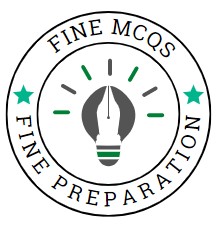31. Elements with atomic numbers from 96 to 109, synthesized only in particle accelerators, are called:
(a) Radioactive
(b) Unstable elements
(c) Radio Isotope
(d) Heavy elements
32. The two particles in the nucleus of an atom are called:
(a) Nucleic particles
(b) Subatomic particles
(c) Central particles
(d) Inner particles
33. A negatively charged particle that moves around the nucleus of an atom in orbits is called:
(a) Positron
(b) Electron
(c) Proton
(d) Neutron
34. The simplest and lightest atom is:
(a) Atom of Hydrogen
(b) Atom of Argon
(c) Atom of Oxygen
(d) Atom of Ozone
35. The atomic number of an element is the number of:
(a) Positrons in its nucleus
(b) Protons in its nucleus
(c) Neutrons in its nucleus
(d) Electrons in its nucleus
36. Elements are grouped by their atomic number in a table called:
(a) Periodic table
(b) Atomic table
(c) Atom table
(d) Table of atoms
37. An atom or group of atoms that is either positively charged or negatively charged due to the loss or gain of electrons is called:
(a) Ion
(b) Positron
(c) Charged atom
(d) Molecule
38. In which nuclear reaction is an atom split into two approximately equal masses?
(a) Atomic reaction
(b) Fusion
(c) Atomic decay
(d) Fission
39. The fusing of the nuclei of light elements, such as hydrogen, into those of heavier elements, such as helium, is called:
(a) Fusion
(b) Fission
(c) Stabilization
(d) Massing
40. Name the device which produces electricity from chemicals?
(a) Battery
(b) Generator
(c) Galvanometer
(d) Reactor

